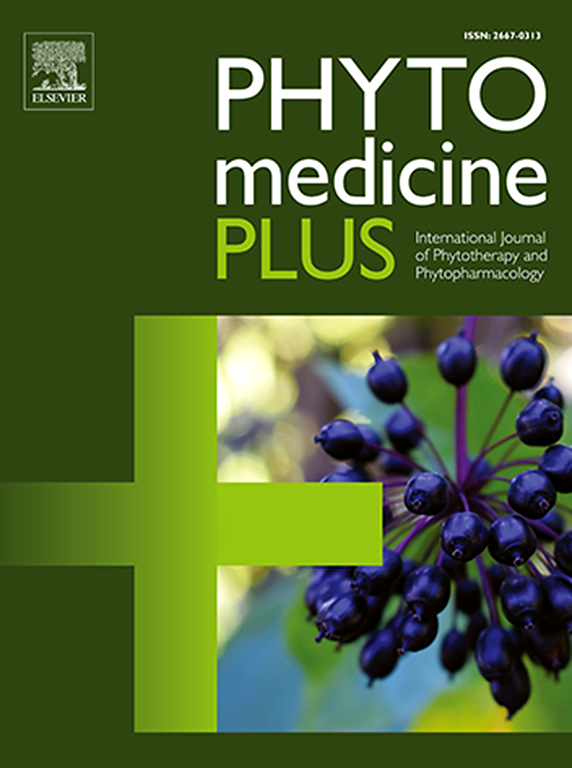天然免疫增强剂:香豆素在药物发现中作为新兴的免疫增强剂
Q3 Pharmacology, Toxicology and Pharmaceutics
引用次数: 0
摘要
随着全球健康威胁的增加,增强宿主免疫力已成为药物发现的中心焦点。香豆素是一类丰富存在于植物中的酚类化合物,由于其多方面的生物活性,包括抗氧化、抗炎和免疫调节作用,已成为有希望的候选物质。目的探讨香豆素作为具有重要治疗潜力的天然免疫增强剂的作用。这一目标是通过彻底研究香豆素如何影响免疫系统,它们的历史用途,临床应用,以及将它们开发为药物的挑战来实现的,显示它们影响先天和适应性免疫的能力。方法通过体外、体内和有限的临床研究,对香豆素的植物化学、生物合成和免疫学影响进行文献分析。这篇综述强调了香豆素衍生物及其与免疫细胞、细胞因子和氧化应激途径的相互作用,同时也考虑了它们与传统药物的协同作用。结果香豆素通过调节细胞因子分泌、增强吞噬活性、减轻氧化应激等多种途径影响免疫系统。诸如伞形花酮、东莨菪素和蛇床子素等化合物已在各种疾病模型中显示出免疫保护功能。它们在呼吸系统和炎症性疾病中的传统用途与当代药理学发现一致。然而,生物利用度差、监管不明确和有限的临床数据仍然是其治疗应用的主要障碍。结论香豆素是一类有效但未被充分利用的天然免疫调节剂。随着纳米载体和前药等新的递送方法的出现,以及彻底的临床试验,它们可能会改变我们治疗免疫相关疾病的方式,并与其他疗法一起使用。跨学科合作可能是将其潜力转化为现实世界治疗的关键。本文章由计算机程序翻译,如有差异,请以英文原文为准。
Natural immune boosters: coumarins as emerging potentiators of immunity in drug discovery
Background
In the wake of increasing global health threats, bolstering host immunity has become a central focus in drug discovery. Coumarins, a class of phenolic compounds abundantly found in plants, have emerged as promising candidates due to their multifaceted biological activities, including antioxidant, anti-inflammatory, and immunomodulatory effects.
Objective
This review aims to explore the evolving role of coumarins as natural immune boosters with significant therapeutic potential. This goal is achieved by thoroughly looking at how coumarins affect the immune system, their historical uses, their clinical applications, and the challenges in developing them as drugs, showing their ability to influence both innate and adaptive immunity.
Methods
A literature-based analysis was conducted on the phytochemistry, biosynthesis, and immunological impact of coumarins, supported by in vitro, in vivo, and limited clinical studies. The review highlights key coumarin derivatives and their interactions with immune cells, cytokines, and oxidative stress pathways, while also considering their synergistic effects with conventional drugs.
Results
Coumarins influence multiple facets of the immune system by regulating cytokine secretion, enhancing phagocytic activity, and attenuating oxidative stress. Compounds such as umbelliferone, scopoletin, and osthole have demonstrated immunoprotective functions in various disease models. Their traditional use in respiratory and inflammatory disorders aligns with contemporary pharmacological findings. However, poor bioavailability, regulatory ambiguity, and limited clinical data remain major barriers to their therapeutic application.
Conclusion
Coumarins represent a potent yet underutilized class of natural immunomodulators. With new delivery methods like nanocarriers and prodrugs, along with thorough clinical testing, they could change the way we treat immune-related diseases and be used alongside other therapies. Interdisciplinary collaboration could be pivotal to translating their potential into real-world treatments.
求助全文
通过发布文献求助,成功后即可免费获取论文全文。
去求助
来源期刊

Phytomedicine Plus
Medicine-Complementary and Alternative Medicine
CiteScore
3.70
自引率
0.00%
发文量
178
审稿时长
81 days
期刊介绍:
 求助内容:
求助内容: 应助结果提醒方式:
应助结果提醒方式:


